As someone who has written roughly 2,000 actual recipes in my writing “career”(?!), I know a dirty secret: Good chefs and home cooks don’t follow recipes.
They might read recipes and get inspired by recipes, but very few will sit down and actually follow a recipe step-by-step.
I know I don’t.
After you start cooking more, you’ll notice that you discount certain steps in recipes and some steps you’ll just ignore completely for various reasons.
I actually think a lot of frustration in cooking comes from thinking you have to follow a recipe step-by-step only to have it fail in your face!
So, in an effort to remove some of the stress, I thought it would be fun to break down the recipe steps that I almost NEVER follow!
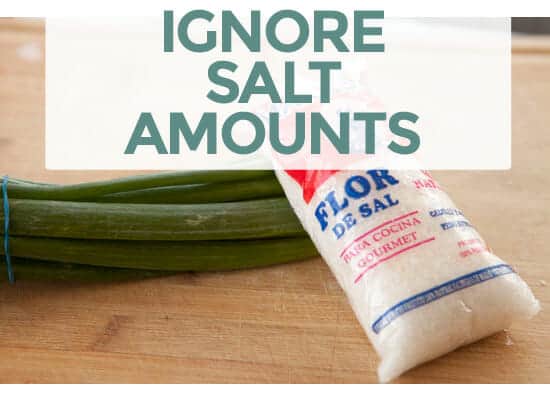
I pretty much ignore salt amounts in non-baking recipes. Even in baked goods, I’ll double check that the recipe is written for the salt I’m using.
But, for non-baking recipes, I always know that I’m going to salt the dish and adjust it to my liking. If a recipe calls for 1 teaspoon salt, I’ll start with 1/2 teaspoon salt and frequently season it up to 1 1/2 teaspoons of salt.
There’s no right answer for salt levels which is why it’s tough to write an amount in a recipe. Learn to taste as you cook and season it to your liking. Then you can just ignore salt amounts!
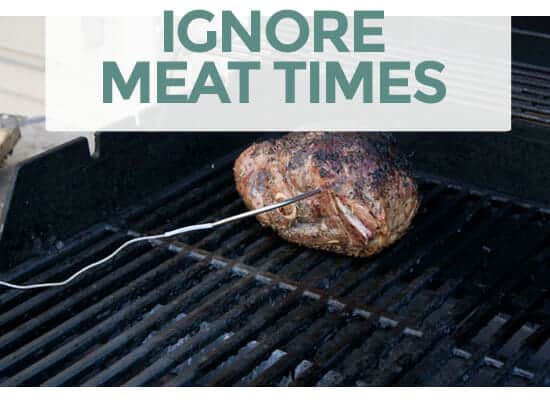
I’m always torn on this as a recipe writer. Nobody should be relying on cooking times for most meat dishes. What you should be relying on is temperature.
If you’re cooking something like a whole chicken or a pork loin, the cooking time can vary by 10-15 minutes easily. If you blindly follow a recipe’s cooking time it’s very likely you’ll end up with an undercooked or overcooked piece of meat.
At the end of the day, unless you are cooking the same piece of meat on the same stove every single day, there’s really no way you’ll know when the thing is cooked correctly without testing the temp.
Buy a decent digital thermometer, use it often, and ignore cooking times in recipes!
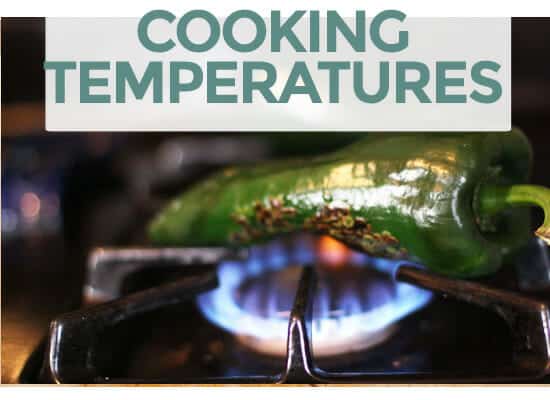
This is a tricky one, but basically you should use cooking temperatures as a guideline rather than a hard and fast rule.
For starters, if your oven runs hot or cold (use an oven thermometer to find out), you’ll want to adjust based on that.
But, more importantly, for stovetop dishes, somebody’s high heat, might be your medium-high heat depending on the stove!
The only way to get a good feel for what cooking temperature you need to use is to cook a lot! Learn your stovetop and your oven and use the recipe instructions as a guideline rather than a rule!
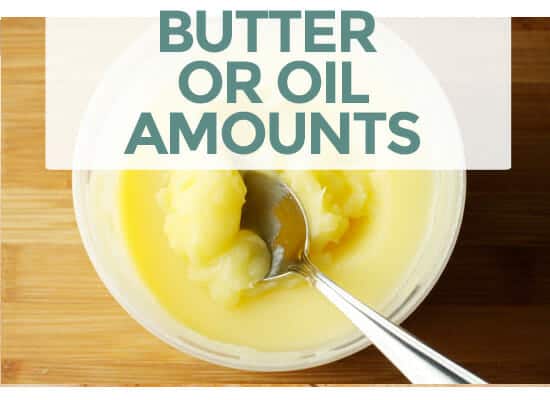
Here’s a naughty secret: Recipe writers frequently reduce the amount of oil in their recipes to make the nutritional facts look better. BUT AT WHAT COST?!
Baking recipes should be pretty spot-on here, but non-baking recipes can vary a lot. For starters, based on what pan you are using, you might need wildly different amounts of oil. If I’m using a nonstick pan, I can get away with a tiny amount, but if I’m using stainless steel, I’ll need much more.
What I would recommend instead is learn how much oil you need for your cookware. That’ll give you a good feel for where you should start with a particular recipe. If you need a tablespoon of oil to coat your large skillet and the recipe you’re using calls for 1 teaspoon of oil, you know what to do.
Most recipes don’t include a prep step but it’s one of the most important steps for successful cooking.
I always recommend prepping every ingredient (chopping, etc.) before you start cooking. That way when you do start cooking you can focus on the actual cooking and you aren’t multi-tasking.
This is not what you see in the world of fast cooking TV competitions, but this is how even the best chefs start their recipes.
Traditionally called mise en place, it means everything is in its place and ready to go.
It should always be step one for any recipe but is almost never written.
_______________
The ironic thing about the things on this list is that you will find them all in my own recipes. That’s because when you write recipes, you try to be specific and succinct, but as a recipe reader, I think it’s good to know areas that aren’t hard and fast rules.
In short, it’ll make you a better cook if you know what sections of recipes you should adapt to your kitchen and personal tastes.
This is my most important list, but I’m sure there are others!
What are some things that you ignore in recipes? Leave a comment!

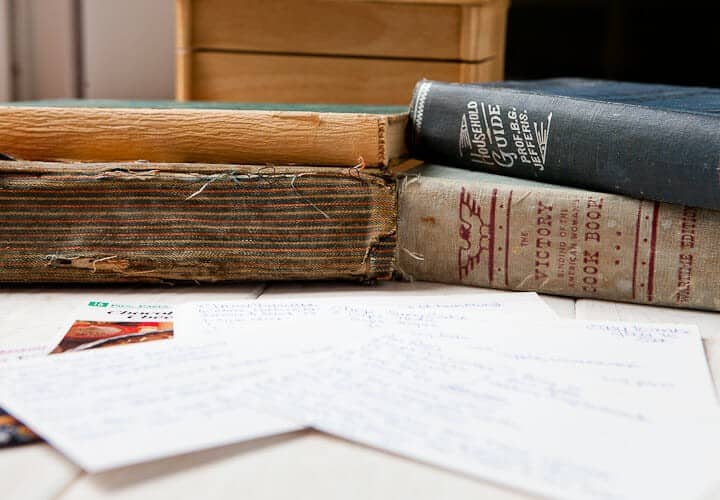
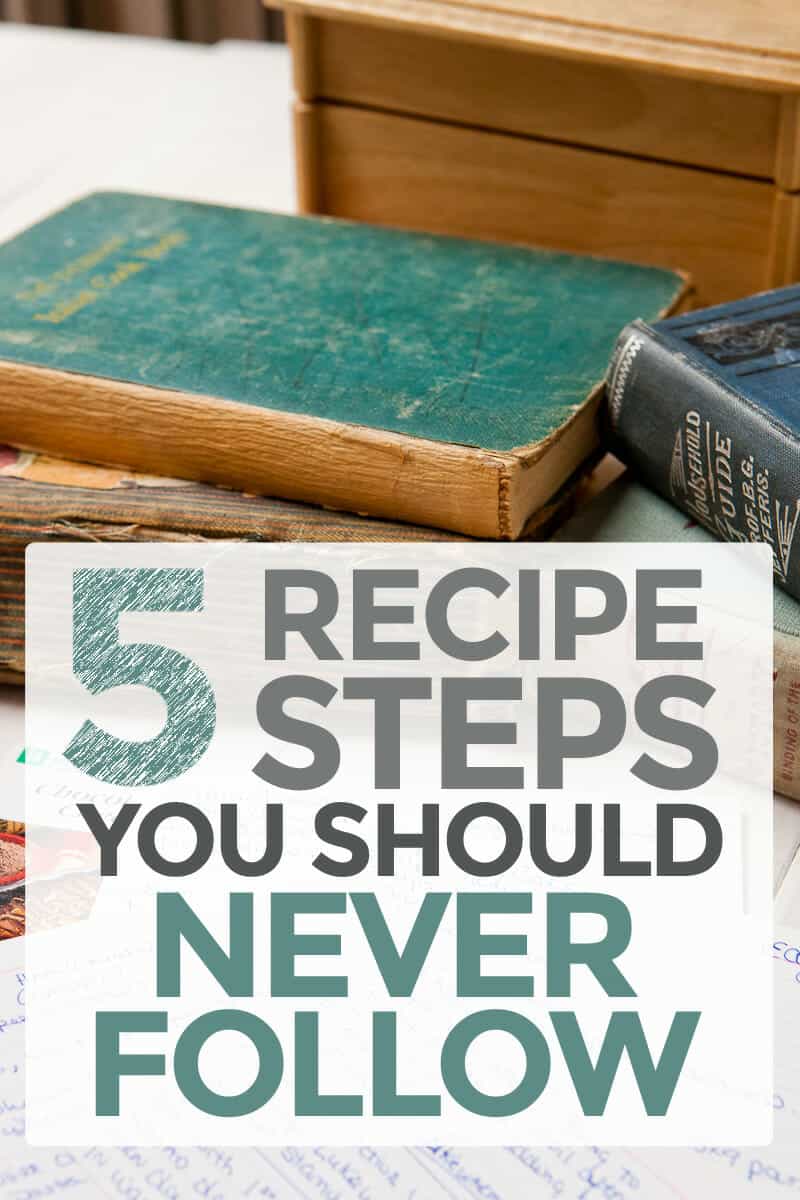

Devin
I’m laughing because this post reads so much like a post I was thinking of doing on my own blog along the lines of “Lessons I learned in my first year of actual cooking.” I definitely used to be one of those cooks who had so little sense of the mechanics of cooking and just followed the recipe to the T and the results were usually pretty mediocre. But I’ve gotten to the point where I can trust my own senses about adjusting temperatures, cooking times, etc. I’ve started to see recipes as ideas more than instructions — I actually use your bacon fat as base oil method for other risottos I’ve made. And recently I even felt comfortable completing changing the order of cooking ingredients in a recipe because it made no sense based on the cooking times I had experienced. And yes, yes, yes to mise en place — I’ve learned some useful things from cooking shows but agree that they kind of screw you there. I do not have the knife skills to be chopping things quickly while also tending a pan.
Nick
Nice Devin! I think you should still write that post. It would be a more personal take on it I think. :)
Karen Anne
I agree completely with the exception of mise en place. The only time I follow this practice is when I do Chinese which comes together extremely quickly and preparation of all ingredients prior to starting to cook is a necessity. While doing other types of cooking, mise en place is mostly a waste of time and just dirties extra vessels.
Example – Making a beef/lamb stew with 12 to 15 ingredients. Heat the pot then start to cube the meat, add the oil to heat directly from the bottle, continue to cube meat as the oil heats. Add the meat to sear when the oil is hot and start to cut up the onions and carrots. As you sear the meat and turn it to caramelize on all six sides, finish cutting the veggies. By te time the meat is ready to be temporarily removed, your veggies are all cut up ready for their turn.
Mince the garlic while your onions and carrots soften, etc. etc.
It do all this ahead is just a waste of time and the potatoes don’t go in until over an hour later. The mushrooms go in 20 minutes before you finish the stew.
Spices, herbs, and seasoning go in diretly from their containers after you add the water or broth.
Nick
Hey Karen! I usually just prep stuff on a single plate or my large cutting board so I don’t dirty a ton of dishes. I hear you though… sounds like you have a good system in place and you know when prep will benefit you and when you can space it out. For a beginning cook though, I always recommend prepping everything first. ;)
Heather
I agree with this. I think mise-en-place is useful for some recipes, but for others, it is a waste of time. What I do is rewrite the recipe according to all the steps needed to complete it and incorporate the amounts in the step, which is not how recipes are written. For example:
1. Sear the meat.
2. While the meat is searing, cut 1 onion, 1 celery, 1 carrot. When meat is done, add to pot and cook.
3. Add half a cup of red wine. While that reduces, cut x, y, z.
You get the picture!
To cut down on the mess, I make sure the dish rack is empty, fill up the sink with soapy water and add dirty dishes to it as I go. Once I have a lull, I do some dishes.
Steph
This is a great list! My boyfriend insists that the first step to any recipe is to empty the dishwasher so you have a place to put the dirty dishes you’re about to make. I often skip this step when he’s gone and usually I end up regretting it.
Nick
That’s an awesome step Steph… I hate it when I start to clean up and the dishwasher is full. First world problems but UGHHH.
Michael
Great stuff, Nick. I would extend the advice about salt to just about any spice. Whether it’s chili powder, black pepper, ground cumin, oregano or whatever, most spices vary quite a bit when fresh and even more as the age a bit, so you have to taste the food!
Nick
Very true Michael. Couldn’t agree more.
Jason Sandeman
Hey, great post here…
Just a word on Mise en Place… It doesn’t just mean to “have everything in it’s place,” it’s a mindset. It means also understanding what you need to do, the steps, the technique, and the process of what you are doing. This eliminates extra steps, which in a professional kitchen is essential if you are going to get anywhere.
Mise en place is NOT a waste of time. I agree that most recipes dont tell you to chop things firsthand, but notice in most good recipes the ingredient will be listed in it’s final form. For example, you will see “Onions, peeled, 1/4 inch dice” in a professional recipe. It is assumed that you will read through the recipe and know that you need to have those onions diced BEFORE you start a recipe.
Great post. I think this needs to have a rebuttal post. Hmm… LOL
Nick
That makes sense Jason. Thanks!
Becca
Great post! I’ve slowly been relearning each of these steps through my haphazard foray into cooking so it’s great to have it reaffirmed (especially the cooking meat, I now completely disregard that). Plus after burning several dishes due to not employing mise en place (lovely it has a name!), that’s my number one priority. Thanks again!
KittyMom755
Onions! Lots and lots of onions. No recipe seems to have enough, if onions are an ingredient. I once told my mother that the best ratio for fried potatoes is one onion to one potato. She didn’t agree, but after years I’ve found it to be still true. Love your blog. I refer to it constantly.
Nick
Nice. I’m a big onion fan also. :)
Patem111
There are 2 things that I consider step skippers. The first is sifting ingredients. I put all my dry in a bowl and mix it good with a fork or whisk. I’ve never had it make a difference in the end result. I have won many blue ribbons for baking and never sifted a thing in my life. The second is I use salted butter regardless of what the recipe calls for. Again, I’ve never noticed a difference nor has anyone I have served (and if they had, they never said anything.) My view on using salted vs unsalted butter is like cooking with wine. They say never to cook with a wine that you would not drink. I prefer to eat salted butter, so that is what I cook and bake with.
Nick
That’s so funny. I thought about including sifting as one of them as I almost never do it. I thought intense bakers would revolt though if I did that. Good to know I’m not the only one!
Sarah O.
I violently agree with both of these things! I never bake with unsalted butter, I just adjust salt amounts. And I sift if I’m making pancakes, that’s it. I also never do wet ingredients in one bowl and dry in another – it’s all going to the same dang bowl eventually!
rafael
When I click the link for this post in your email newsletter, it takes me to the fried tacos post and notto this. (Excuse me if my english is not so good)
Nick
Sorry Rafael. That was my personal error. Just copied in the wrong link. ;0
Nina D
I don’t agree that prepping all ingredients in advance is always necessary. For a stir-fry, sure, or something like that where you don’t want to be stopping in the middle to chop something or other. But when making a stew, say, when the meat is in the pan browning, instead of twiddling my thumbs because all my ingredients are already prepped, I will use that time to chop onions, gather and measure liquids, etc. I find if I have time for thumb-twiddling, I get into trouble. Like, sniff-sniff, what’s burning?? kinda trouble.
The instruction I ignore the most is “serve immediately!” Unless its pasta or something equally best eaten right away, most things can wait until you’ve got your act together and are ready to sit down to a meal.
Kim
I love old cookbooks, mainly for reading as the results are usually tasteless. If I cook a recipes, I follow the recipe exactly. If we like it, my family comments what they liked/disliked, modify the recipe and added to the keep pile.
Karen
Wow do I a agree. It’s taken me a long time, over 50+ years to prep first. So much easier. And the clean dishwasher is almost a must anymore. Been cooking since I was 16 – learned on the phone with grandma on the other end. I do however need to add that I can tell by looking at a recipe that I will need to alter it or add ingredients to it. I really dislike bland food. I’ve seen recipes with no added salt or pepper even?? I try to add spices to enhance the recipe and I’ve become quite proficient at soups. I’ve had problems with cooking times too. I did the oven temperature test a few years back and it seems to be right on but that doesn’t mean the recipe I’m using is right on! It can sometimes be frustrating but if you love cooking, you become a good “watch dog”.
Thanks for posting this. Sending it to my daughters.
Nick
That’s awesome karen! I wish I would’ve had the chance to interview my grandma about a few recipes… it’s great to see traditions and recipes carried on like that! Thanks for the comment and for sharing!
Karen
Those are the memories that live on forever! She not only taught me to cook but I lived with her for 3 yrs from age 4 to 7. I remember her making bread once a week, making jams and jellies, cleaning chickens and rabbits that we raised and scaling fish we caught. We lived in Hawaii. Big time Portuguese family. Thanks for responding!
Larry Joseph Morgan
Concerning mise en place, I have always marveled at dicing onions, and how the “pros” say it is supposed to be done! Most will say that one needs to cut the onion vertically and horizontally before slicing. Why? The onion, itself, has made it easy on us! Cut the onion in half through the top and root. Place each half cut side down, make vertical cuts, and then slice and you get a perfect dice! This eliminates one step, as well as reducing the risk of injury when trying to slice the onion horizontally with one’s hand and wrist exposed.
KittyMom
You are so right! My technique is similar :halve, slice, then lay the slices flat and cut in wedges. Ta-da!
Cindy
Easiest of all — chop in the food processor. never fails and I don’t get weepy.
Larry Morgan
True, it’s easier, BUT…personally, I find “prosessed” onion more bitter and stringent, and a bit overwhelming.